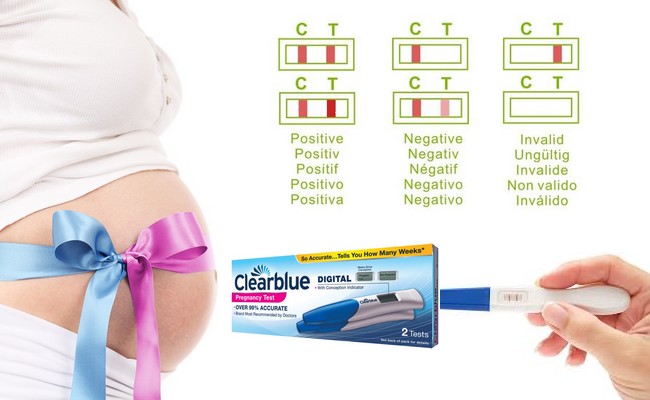How do you choose the right pregnancy test? This is a very important question, because since the pregnancy test market has been opened up to supermarkets, not all pregnancy tests are equal in terms of the quality and reliability of their results
Have you had unprotected sex and are you worried? You’re wondering whether you’re pregnant… Whether it’s a question filled with enthusiasm or fear, you deserve an unambiguous answer. There is a wide range of urine tests available to help you answer this question in complete privacy, provided they are used correctly. Here are a few essential precautions that your pharmacist can tell you about. Don’t hesitate to ask.
Importance of the ovulation period
The ovulation period is crucial for conception and the detection of pregnancy.
Sperm can survive in the female reproductive system for up to 5 days, but the egg is only viable for around 24 hours. If you are trying to conceive, it is important to know your ovulation period to maximise your chances of pregnancy.
Choosing a pregnancy test in your pharmacy
– There are a number of different tests available, but whether they are analogue (results displayed as colours or lines) or electronic (display in words: pregnant – not pregnant) they all look like a long pen with a wick protected by a cap, a reading window and a handle.
– Choose the test that seems simplest and most practical in terms of handling and interpretation. All CE-approved tests are 99% reliable.
How does a pregnancy test work?
To understand how pregnancy tests work, you need to do a bit of mental gymnastics… The average woman’s menstrual cycle lasts 28 days, counted from D-1 to D-28. So, from D-1 to D-7, you have your period. Then, on D-14, ovulation occurs: one of the two ovaries releases a mature oocyte into the fallopian tubes. For 24 hours (its lifespan), it can be fertilised by a spermatozoon.
Although fertilisation occurs on D-14, it takes until D-20 for the embryo to attach itself to the walls of the uterus: this is implantation. And it is precisely when the implantation process begins that HCG, or chorionic gonadotropin hormone, is secreted.
This is why the doctor tells you the expected date of your next period (see box on the back of this leaflet). Depending on this date, you can opt either for an early test (4 to 5 days before the date of your period), or for a standard test to be carried out from the 1st day of delay or, better still, between the 3rd and 4th day of delay.
It’s best to do the test when you get up in the morning, as the concentration of pregnancy hormones is highest (less risk of false negatives).
During the day, avoid taking the test if you have been drinking heavily in the hours preceding the test (risk of falsifying the result and obtaining a false negative due to dilution of the BHCG hormones in the urine).
Take your time (you don’t take a pregnancy test during a “pee break”!)..
What type of pregnancy test should I choose?
To understand how to choose the right pregnancy test in a pharmacy, it’s important to understand how these tests work. The procedure is the same for all of them, i.e. a stream of urine on a part of the test in the shape of a “pen” (which is the easiest to use) or by depositing urine in a window on a “cassette”.
The technique used to detect the pregnancy hormone HCG is always the same. It is an immunological method based on an antigen-antibody reaction and will be expressed in the form of a small coloured band (with a control band that must always be present) or in the form of a digital display.
The tests available in pharmacies can have different reading modes, with coloured bands, a cross or a digital display. Tests with coloured bands are more sensitive and more reliable than digital display tests , although tests with coloured bands can sometimes be more difficult to read, especially if the positive band is very lightly coloured. Pregnancy tests with a digital display also indicate the age of the pregnancy in weeks (1-2 weeks, 2-3 weeks or more than 3 weeks).
Waiting for the right moment to test
Pregnancy tests are generally more accurate when carried out after the expected date of menstruation. However, some high-sensitivity pregnancy tests can be used a few days before the expected date of menstruation. It is recommended that you wait at least 14 days after ovulation to take a pregnancy test, in order to obtain a reliable result.
Interpreting the test result
Once the urine has been deposited on the wick, an immunological reaction can be used to determine whether or not the presence of the BHCG hormone specific to pregnancy is present.
Wait for the reaction: once the wick has been moistened, replace the cap and place the pen on a clean surface with the reading window on top.
Read the result: the result is displayed within 3 to 4 minutes. Depending on the test you choose, you can read the result in different ways:
The test is positive :
You are probably pregnant. See your doctor for a confirmatory blood test. This is more sensitive and will give you an estimated date of pregnancy.
The test is negative:
You have followed the procedure carefully: you are probably not pregnant, but you can confirm this result by repeating the test if it reassures you. The test is negative, but you have doubts or you took an early test: as there is a risk of false negatives, it is prudent to repeat the test. In all cases, don’t hesitate to ask your pharmacist or GP for advice.
Regardless of whether or not you intend to continue with your pregnancy, it is essential to contact your doctor if you have had a positive pregnancy test, so that you can receive appropriate treatment.
In conclusion, you should always take a pregnancy test:
- 19 days after unprotected intercourse.
- From the first day your period is late.
- On morning urine, which is much more concentrated in hormone, to avoid the risk of a false negative result.
- A second test must be carried out 48 hours after the first, regardless of the result of the first, to confirm or refute the result.
- If you have taken a morning-after pill, do a pregnancy test 17 days after taking this contraceptive.
FAQ
- When should I take a pregnancy test? It is recommended to wait at least 14 days after ovulation before taking a pregnancy test. Some high-sensitivity tests can be used a few days before the expected date of menstruation, but it is preferable to wait to obtain a more reliable result.
- What is the difference between a urine pregnancy test and a blood test? Urine pregnancy tests detect the presence of the hCG hormone in the urine, whereas blood tests measure the concentration of the hCG hormone in the blood. Blood tests are generally more sensitive and can detect pregnancy earlier than urine tests, but they are also more expensive and less practical.
- How do I choose the sensitivity of a pregnancy test? To choose the sensitivity of a pregnancy test, take your personal situation into account. If you want to get a result as soon as possible, opt for a high-sensitivity test. If you prefer to wait until your period is due, a standard-sensitivity test should suffice.
- Which type of pregnancy test is easiest to use? Stick tests and digital tests are generally the easiest to use, as they don’t require complex handling and give clear results. Digital tests are particularly easy to read, as they display the results in text form, such as “pregnant” or “not pregnant”.
- How do I find a reliable and affordable pregnancy test? To choose a reliable and affordable pregnancy test, compare the different options available in pharmacies. Look for tests from well-known brands and read user reviews. Don’t hesitate to ask your pharmacist for advice to help you choose the pregnancy test that best suits your needs and budget.
Arnaud. C (Doctor of Pharmacy)





